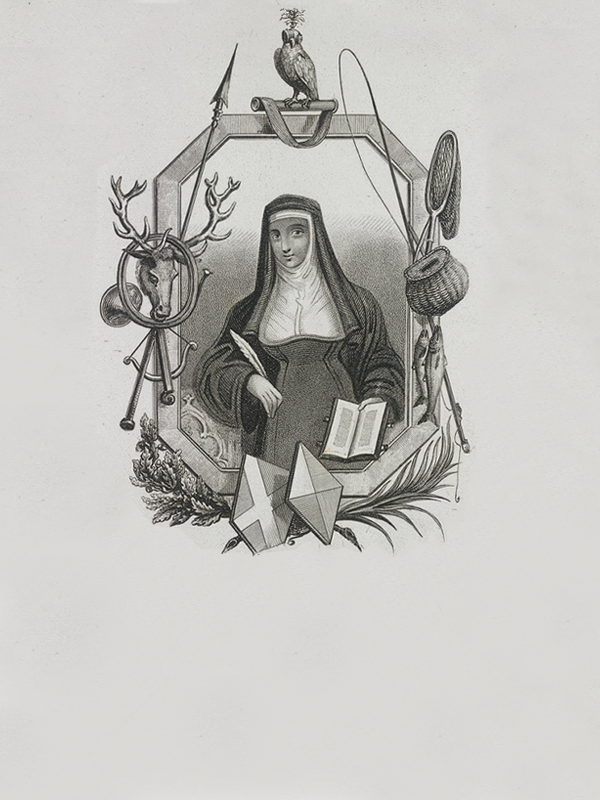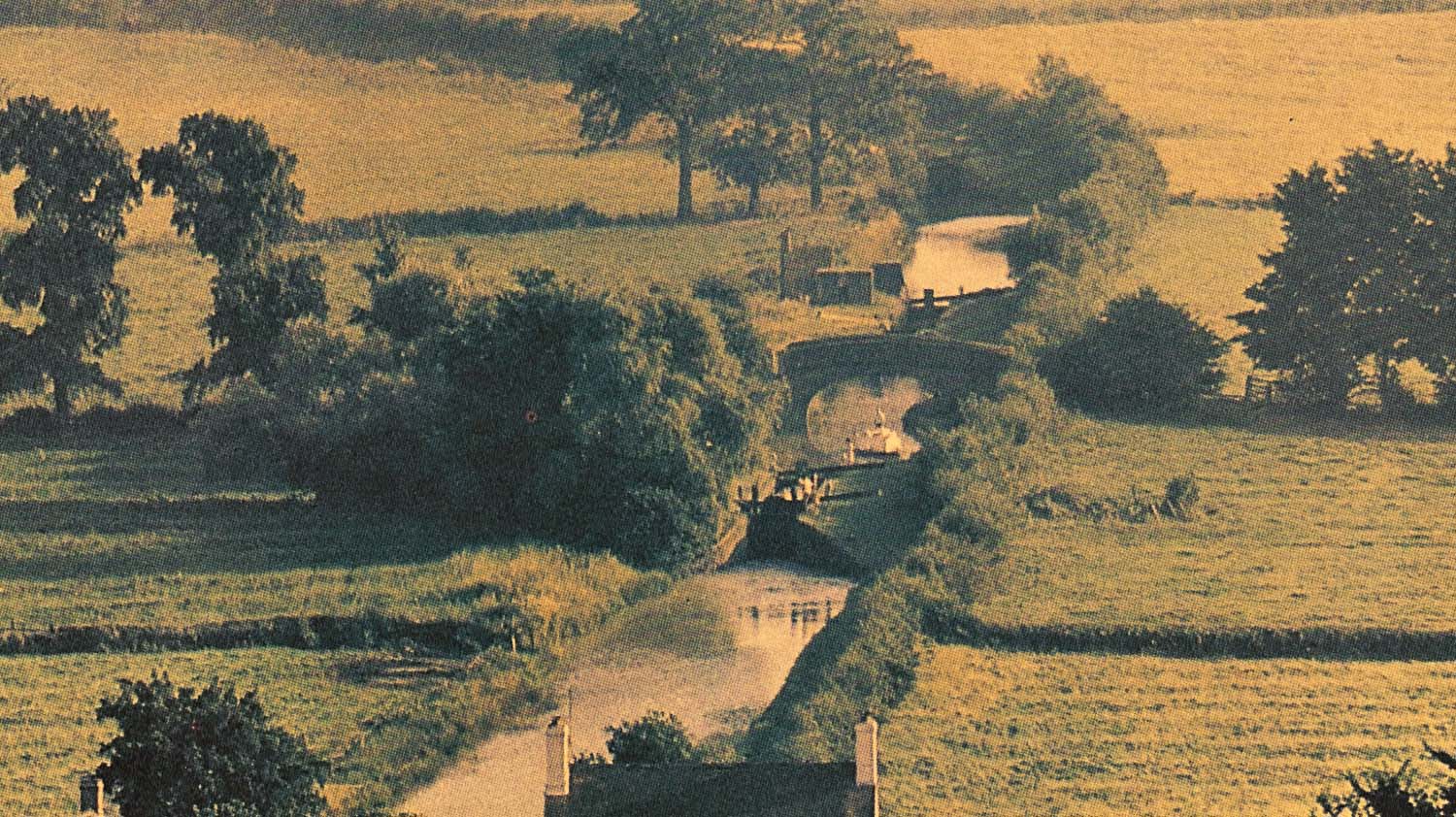
Fishing from the 17th to the 19th century
Fishing from the 17th to the 19th century

Three dates are to be remembered here, the publication of “The Compleat Angler” by Izaac Walton in 1653, that of “Le pêcheur français” by Kresz in 1818 and “Le pêcheur à la mouche artificielle” by Charles de Massas in 1852.
In ancient fishing, in the kingdom of France, at about the same time as the “Compleat Angler”, appeared in 1660, the first edition of “Ruses innocentes dans lesquelles se voient comment on prendre les oyseaux passagers et les non passagers, et de plusieurs sortes de bêtes à quatre pieds. With the most beautiful secrets of fishing in the rivers and ponds and the way to make all the rets and nets that one can imagine.”
This book, signed F.F.F.R.D.G. in other words Brother François Fortin Reverend of Grammont known as the Inventive Solitaire, inaugurated a genre that was taken up many times until the end of the 18th century.
In the chapter on fishing, he describes for the first time the invention and manufacture of the landing net, an instrument that allows one to take a large fish out of the water without the risk of breaking the leader.

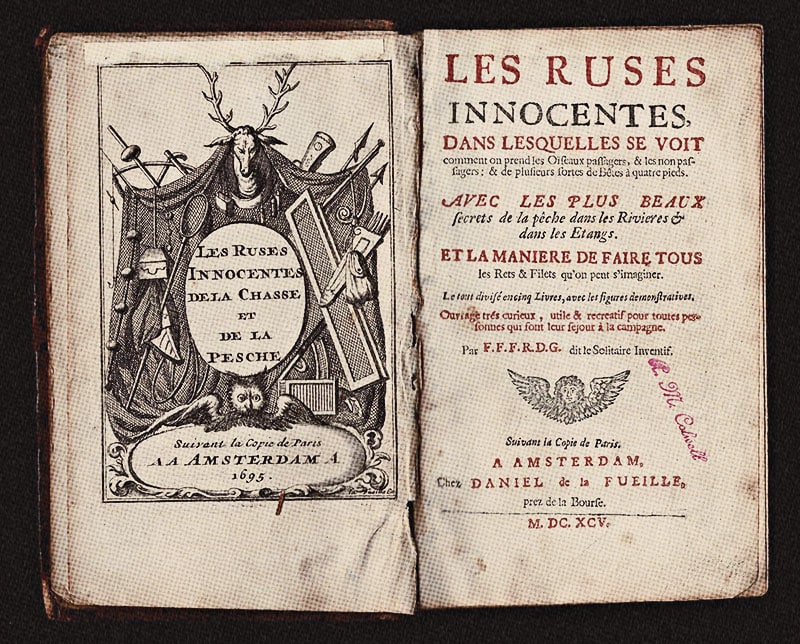
Published in 1660, the first edition of "Innocent tricks in which are seen how one takes the passenger and nonpassenger birds..."
It will be necessary to wait more than one hundred and fifty years, so that a work in French language, really brings new in angling.
With “Le Pêcheur Français” published for the first time in 1818, Kresz Ainé, who was a manufacturer of fishing and hunting ustensils in Paris, laid the foundations of modern sport fishing, more or less as we know it today. “I went to Neuilly sur Marne, three leagues from Paris, towards the end of October 1818. It was about ten in the morning when I arrived. My young student was waiting for me impatiently. I said to him: now throw your bait, this beautiful gudgeon will do well, beyond these weeds, and let it sink to the bottom; bring it up until it is near the surface of the water; let it sink again… Bring it up… pull a little to the right and left… let it go down again… bring it up slowly… pull back a little, and bring the bait close to the edge. Nothing bit. Don’t lose your patience… Toss the bait further out and start moving it up and down again.”
This is exactly the technique known as “poisson mort manié” used today (as in ancient fishing) by hundreds of thousands of anglers casting to catch pike and zander.
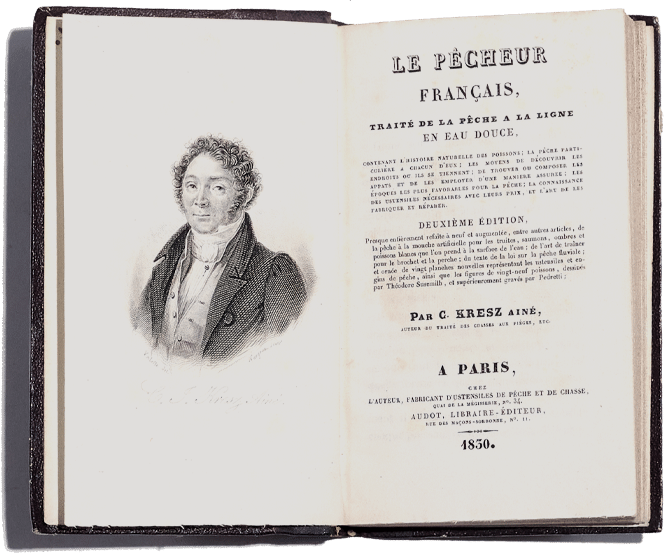
With "Le Pêcheur Français" published for the first time in 1818, Kresz Ainé laid the foundations of modern sport fishing.

In 1830, in the second edition of Le Pêcheur Français by Kresz Ainé, a plate describes very precisely the fishing of pike with livebait, but also artificial flies for fly fishing.
In 1826, Charles de Massas caught the first salmon on the fly in France.
For artificial fly fishing, we will have to wait a few more decades, since it was in 1852 that Charles de Massas published his “Manuel du Pêcheur à la mouche artificielle”. At the time of Daumier, Charles de Massas had the courage to write: “It must be recognized, however, that stationary fishing, as it is generally practiced, provides and will always provide a thousand and one subjects for satire. But let us hasten to say it, if it is impossible to ignore all that fishing with a rod produces of laughable or disastrous, there is another fishing which, although exercised with the help of a line, does not authorize the reproaches addressed from all sides to this famous instrument with two ends. It is artificial fly fishing. As much as the former requires intellectual abnegation and physical nonchalance, the latter requires study and activity.”
To our knowledge Charles de Massas was the first French fisherman to catch a salmon with an artificial fly in ancient fishing. In 1826, while a civil servant of the Registration Office stationed in Sedan, he relates in great detail in his book, that accompanied by a local guide, he caught after more than half an hour’s struggle, with a fine stocking intended for trout, a salmon of seven pounds. This feat, because with the equipment of the time, it was one, took place in Bouillon, in the Semois river, tributary of the Meuse. Another salmon estimated at about fifteen pounds, escaped him.
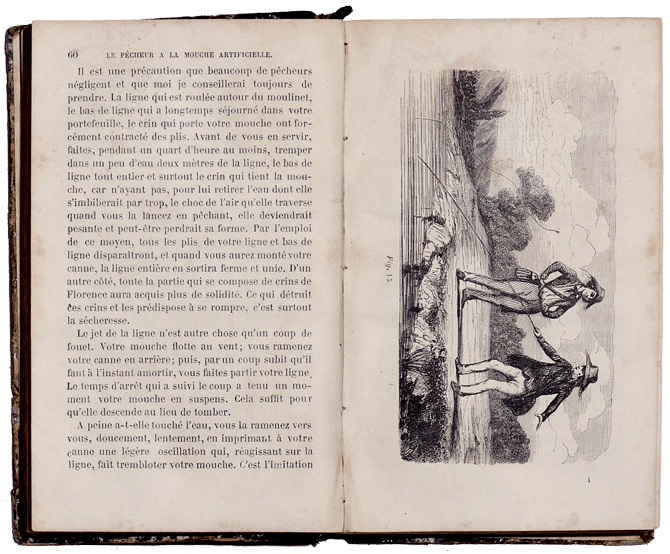
Charles de Massas is the first French author to describe whipped fly fishing.


